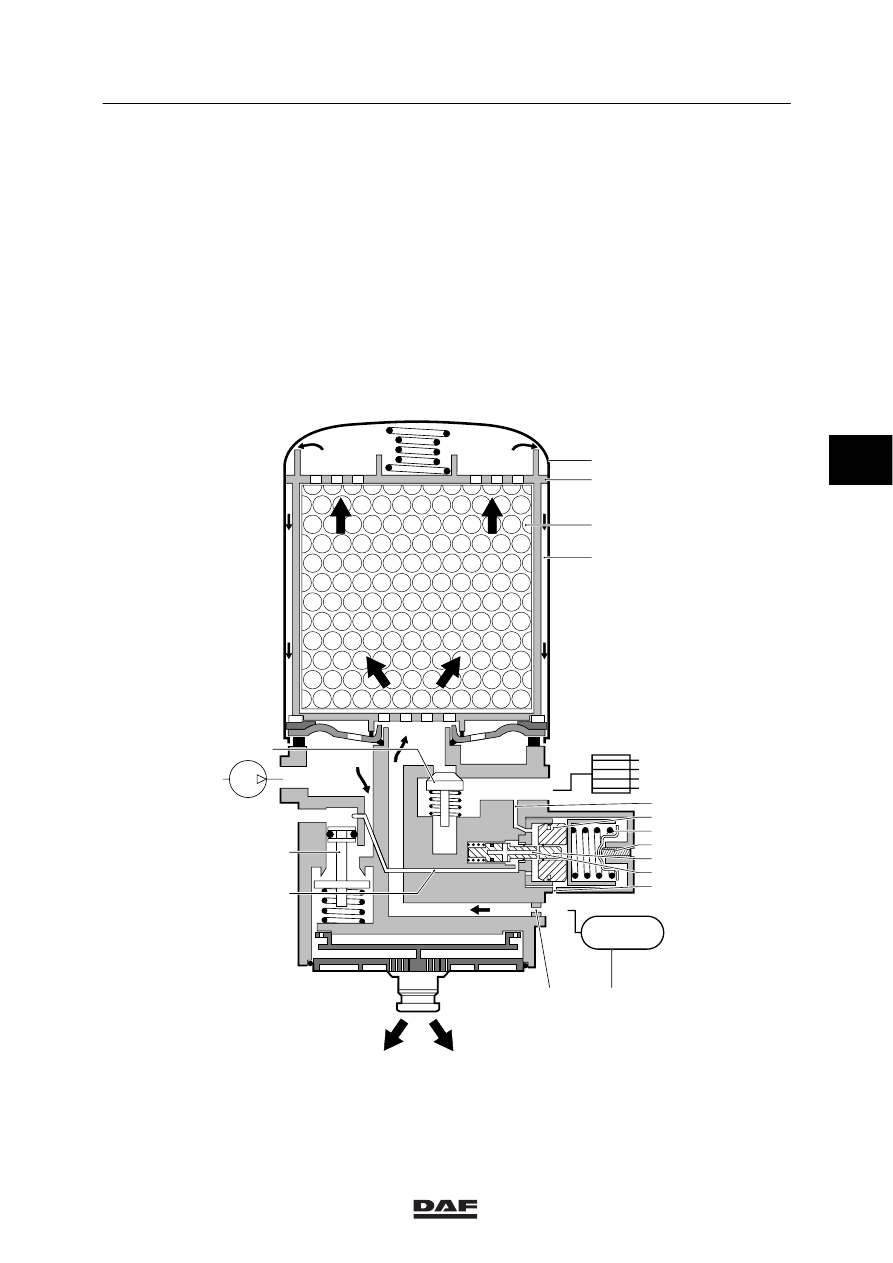DAF 95XF. Manual - part 137

6
Inspection and adjustment
BRAKE COMPONENTS
1-31
KNORR design
Adjusting the cut-out pressure
1.
Adjust the cut-out pressure with adjusting
screw (12). For the specified cut-out
pressure, see the main group
“Technical data”.
Checking the regenerative action of the air
dryer
1.
Pressurise the compressed air braking
system (pressure regulator should cut out).
2.
Switch off the engine. The regeneration air
should escape via the exhaust port of the
air dryer, for some time.
1
21
22
23
3
19
20
18
17
16
23
21
22
24
9
1
2
0
5
6
7
8
10
11
12
13
14
15
R600260
4
ǹ 0006